Environmental and Emission Regulations Impacting Industrial Power Plant Boiler Selection
Selecting an industrial power plant boiler is no longer just about meeting capacity and efficiency targets—it must also align with a growing framework of environmental and emission regulations. Power plant boilers, especially those using solid or fossil fuels, are subject to stringent controls due to their significant emissions of SOx, NOx, CO₂, particulate matter (PM), and mercury. Failure to meet these standards can result in project delays, legal penalties, permit rejections, or costly system retrofits, making regulatory compliance a core factor in boiler selection and design.
Environmental and emission regulations impact industrial power plant boiler selection by dictating allowable emission levels, influencing fuel choices, combustion technologies, flue gas treatment systems, and emissions monitoring requirements. Regulations such as the U.S. EPA Clean Air Act, EU Industrial Emissions Directive (IED), and country-specific climate policies impose strict limits on pollutants and carbon emissions. These requirements affect boiler configuration, emission control integration (like FGD, SCR, ESP), and long-term operational feasibility.
Making the right decision starts with understanding how environmental laws shape boiler system design and operation.
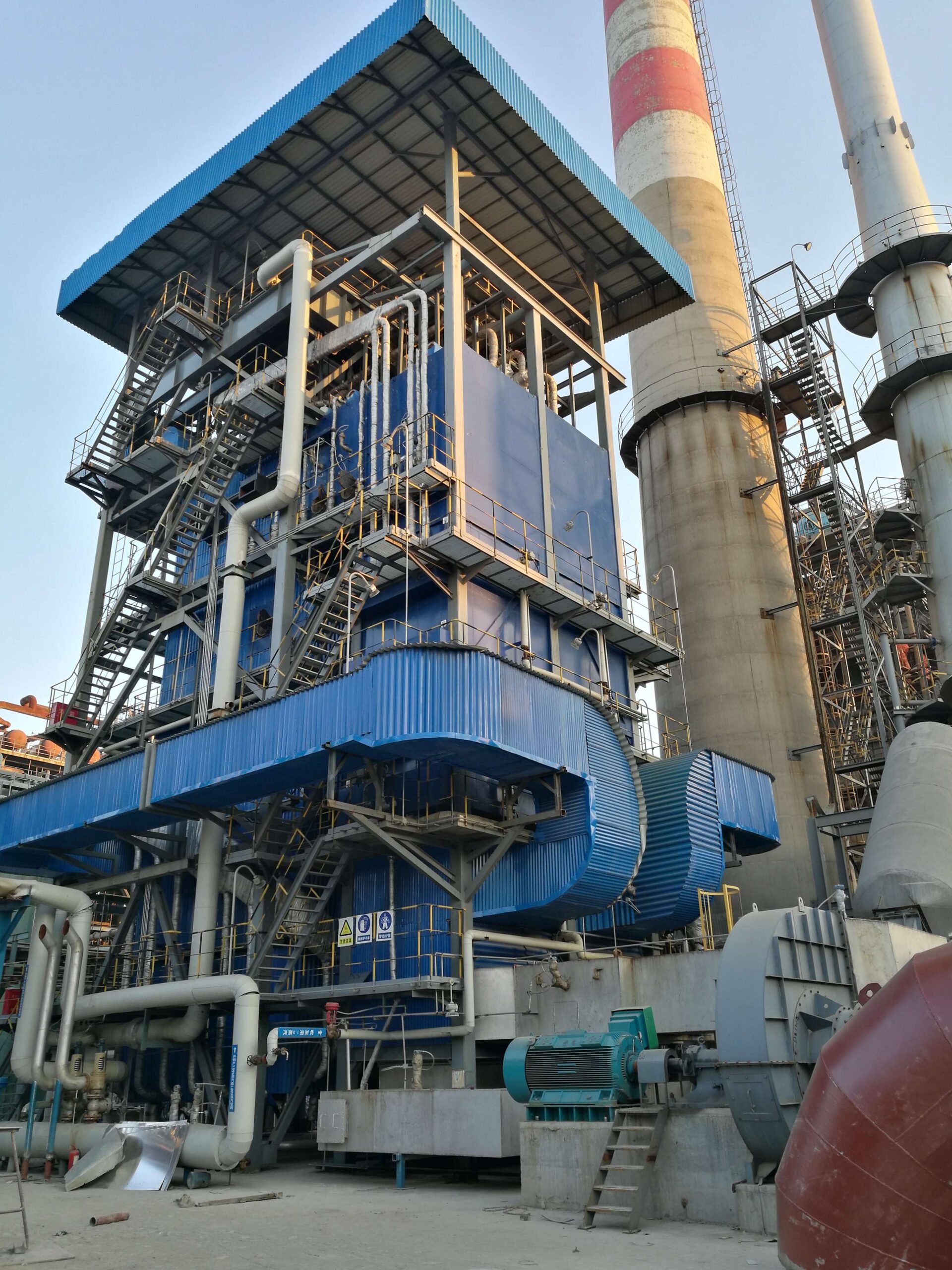
What Pollutants Are Regulated in Industrial Power Plant Boiler Emissions?
Industrial power plant boilers—especially those fired by coal, biomass, oil, or waste fuels—are essential for generating process steam and electricity. But they are also major sources of air pollution if left uncontrolled. Recognizing their impact on human health and the environment, governments around the world regulate these boilers under stringent emission standards. These standards define not only allowable pollutant limits but also require specific emission control technologies and continuous monitoring systems. Understanding which pollutants are regulated is critical for ensuring compliance, avoiding penalties, and minimizing environmental harm.
Regulated pollutants in industrial power plant boiler emissions include sulfur oxides (SOx), nitrogen oxides (NOx), particulate matter (PM), carbon monoxide (CO), carbon dioxide (CO₂), heavy metals such as mercury (Hg), and acid gases like hydrogen chloride (HCl) and fluorides (HF). These pollutants are limited by national and international environmental standards due to their effects on air quality, climate change, and public health.
Compliance requires both combustion control and advanced post-combustion pollution control equipment.
Industrial power plant boiler emissions are regulated for pollutants such as SOx, NOx, PM, CO, CO₂, and mercury.True
These pollutants are harmful to human health and the environment, and their emissions must be limited under global and regional air quality laws.
🧪 Key Regulated Pollutants and Their Impacts
| Pollutant | Source in Boiler System | Environmental/Health Impact |
|---|---|---|
| SO₂ / SOx | Sulfur in fuel (coal, oil, biomass) | Acid rain, respiratory disease |
| NOx (NO + NO₂) | High-temperature combustion of fuel nitrogen | Smog, ozone formation, asthma |
| PM (Dust, Ash) | Fly ash, soot, incomplete combustion | Lung damage, visibility reduction |
| CO | Incomplete combustion | Toxic gas, oxygen displacement in blood |
| CO₂ | All fuel combustion | Greenhouse gas, climate change |
| Hg (Mercury) | Trace metal in coal or RDF | Neurotoxic, bioaccumulates in fish |
| HCl / HF | Halogens in fuel | Corrosive to equipment, acid gas pollution |
| VOCs / Dioxins | Incomplete combustion of organics | Carcinogenic, photochemical smog |
→ Regulations aim to reduce, eliminate, or continuously control these emissions.
📋 Typical Emission Limits in Major Jurisdictions
| Pollutant | EU IED (mg/Nm³) | US EPA MACT (mg/Nm³) | India CPCB (mg/Nm³) | China GB13271 (mg/Nm³) |
|---|---|---|---|---|
| SO₂ | 150–200 | 150–250 | 100–600 | 200–400 |
| NOₓ | 150–200 | 150–200 | 300–450 | 200–300 |
| PM | 10–20 | 25–50 | 30–50 | 20–30 |
| CO | 100–150 | 100–150 | 100–200 | 150–300 |
| Hg | <0.03 | <0.01 | <0.03 | <0.05 |
| HCl | 10–30 | 10–30 | N/A | 10–20 |
Note: Limits vary by boiler size, fuel type, and industry sector.
🔧 Technologies Used for Emissions Control
| Pollutant Controlled | Emission Control System | Removal Efficiency (%) |
|---|---|---|
| SO₂ | Wet or Dry Flue Gas Desulfurization (FGD) | 90–98% |
| NOₓ | SNCR / SCR | 40–95% |
| PM | Baghouse Filter / ESP | 99–99.9% |
| CO | Combustion air control, burner tuning | 60–90% |
| Hg | Activated Carbon Injection (ACI) | 80–95% |
| HCl / HF | DSI or Wet Scrubber | 70–95% |
Multiple systems are often used in combination to meet all required limits.
📊 Real-World Boiler Emissions Profile – 45 TPH Coal-Fired CFB Boiler
| Pollutant | Raw Emission (mg/Nm³) | Post-Control Level | Compliance Standard Met |
|---|---|---|---|
| SO₂ | 680 | 135 | ✅ EU/India |
| NOₓ | 420 | 165 | ✅ EU/India |
| PM | 120 | 22 | ✅ EU/India |
| CO | 260 | 85 | ✅ All regions |
| Hg | 0.06 | 0.015 | ✅ US/EU |
→ Achieved using SNCR, bag filter, in-bed limestone, and ACI system.
🌍 Why These Pollutants Are Regulated
| Category | Reason for Regulation |
|---|---|
| Health Risks | PM, SO₂, NOₓ, CO, and Hg cause respiratory and neurological harm |
| Environmental Damage | Acid rain, smog, and climate change |
| Global Policy Commitments | Required for carbon neutrality, ESG goals, and net-zero targets |
| Cross-Border Pollution | SO₂ and NOₓ travel across national borders |
→ Emissions regulation is part of global environmental responsibility.
🧠 Compliance Tools for Monitoring Pollutants
| Tool | Function |
|---|---|
| CEMS | Real-time monitoring of SO₂, NOₓ, PM, CO |
| DAHS (Data Acquisition & Handling) | Logs, trends, and reports data |
| Flue Gas Analyzers | Spot-check combustion quality |
| ISO 14001 EMS | Structured emissions management system |
These tools ensure continuous compliance and data transparency.
In conclusion, industrial power plant boilers are regulated for a wide range of harmful pollutants including SO₂, NOₓ, PM, CO, CO₂, and mercury. These emissions are targeted due to their significant impact on health, environment, and climate. To meet legal limits, plants must deploy a combination of emission control technologies and continuous monitoring systems. Understanding and controlling these pollutants is not just about meeting regulatory requirements—it’s about operating safely, sustainably, and responsibly.
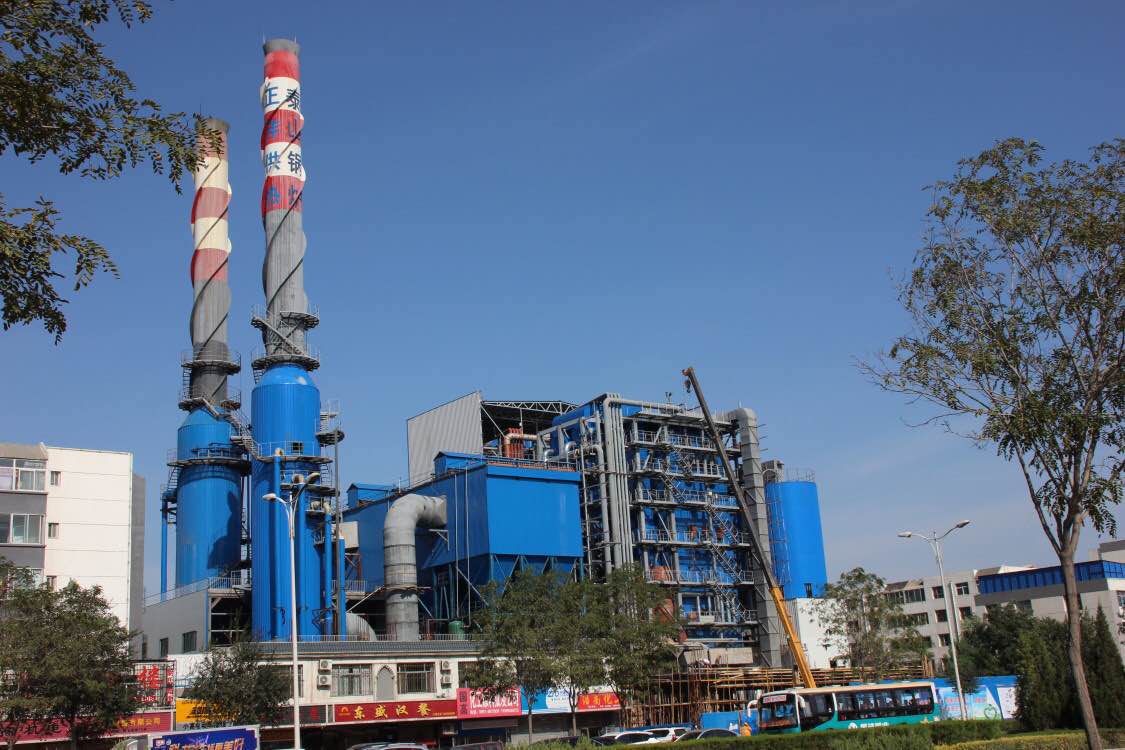
Which Global and Regional Environmental Regulations Apply to Power Plant Boilers?
Power plant boilers—whether powered by coal, biomass, natural gas, or oil—are among the most closely regulated industrial sources of pollution. As the largest stationary emitters of SOx, NOx, PM, CO₂, and hazardous air pollutants, their operation is subject to a complex web of environmental laws, emission caps, and mandatory monitoring protocols. These rules are enforced globally and regionally to reduce air pollution, protect public health, and meet climate change goals. For boiler system designers, operators, and investors, understanding these regulatory frameworks is not optional—it’s essential for compliance, risk avoidance, and long-term project viability.
Global and regional environmental regulations that apply to power plant boilers include the EU’s Industrial Emissions Directive (IED), the U.S. EPA’s MACT and NSPS standards, India’s CPCB norms, China’s GB13223 and GB13271, and numerous other national and state-specific rules. These laws set strict limits for pollutants such as SO₂, NOₓ, PM, CO, Hg, and GHGs, and mandate the use of pollution control technologies, continuous emissions monitoring (CEMS), and environmental permitting.
Without adherence to these regulations, power plants risk fines, shutdowns, legal action, and public backlash.
Power plant boilers are regulated under international and national environmental laws to limit pollutant emissions.True
Countries enforce emission standards and monitoring requirements for power boilers to reduce air pollution and comply with climate commitments.
🌍 Global and Regional Regulations Overview
| Region/Country | Regulation Name / Body | Boiler Scope | Emissions Regulated |
|---|---|---|---|
| European Union | Industrial Emissions Directive (IED) 2010/75/EU + LCP BREF 2022 | >50 MWth (Large Combustion Plants) | SO₂, NOₓ, PM, CO, VOCs, HCl, CO₂, Hg |
| United States | EPA MACT (40 CFR Part 63) + NSPS (Part 60) | Utility and industrial boilers >10 MMBtu/hr | SO₂, NOₓ, PM, CO, HAPs, Hg, CO₂ |
| China | GB13223-2011 (Power Boilers) + GB13271-2014 (Industrial Boilers) | All coal/gas/biomass-fired boilers | SO₂, NOₓ, PM, CO, Hg, HCl, CO₂ |
| India | CPCB Emission Norms (2015, 2017) + MoEFCC Notifications | >5 TPH or >15 MWth boilers | SO₂, NOₓ, PM, Hg, CO, CO₂ |
| Canada | CCME Guidelines + Provincial Acts (e.g., Ontario Reg. 419) | Varies by province | PM, NOₓ, SO₂, GHGs |
| Australia | National Environment Protection Measures (NEPM) + State EPAs | Site-specific licensing | PM, NOₓ, SO₂, VOCs |
| South Africa | National Environmental Management: Air Quality Act (NEM:AQA) | >50 MW combustion units | PM, SO₂, NOₓ, CO |
| Korea | Clean Air Conservation Act + Emissions Trading Scheme | >10 MW boilers | NOₓ, SO₂, PM, CO₂ |
→ These frameworks often require both permit compliance and emissions data reporting.
📏 Sample Emission Limits by Regulation
| Pollutant | EU IED (mg/Nm³) | US EPA MACT | India CPCB | China GB13223 |
|---|---|---|---|---|
| SO₂ | 150–200 | 150–250 | 100–600 | 200–400 |
| NOₓ | 150–200 | 150–200 | 300–450 | 200–300 |
| PM | 10–20 | 25–30 | 30–50 | 20–30 |
| CO | 100–150 | 100–150 | 100–200 | 150–300 |
| Hg | <0.03 | <0.01 | <0.03 | <0.05 |
| CO₂ | Reported (ETS) | Reported (GHGRP) | Monitored | Reported |
Each country may apply tighter limits for newer plants or based on regional air quality needs.
🧰 Required Compliance Components for Each Regulation
| Component | EU IED | US EPA | India CPCB | China GB13271 |
|---|---|---|---|---|
| Pollution Control Equipment | ✅ | ✅ | ✅ | ✅ |
| CEMS (Emissions Monitoring) | Mandatory | Mandatory | Mandatory (≥10 TPH) | Mandatory (≥10 TPH) |
| Permit-to-Operate | Required | Required | Required | Required |
| Emission Reporting System | Monthly | Annual + Electronic | Online Portal | Online + Onsite |
| GHG Reporting | EU ETS | GHGRP | PAT + Perform-Achieve-Trade | NDRC + ETS pilots |
Compliance often demands cross-functional integration between operations, engineering, and environmental teams.
🧪 Real-World Compliance Case: 70 MW CFB Boiler (Vietnam)
Project Type: Biomass + coal co-fired power boiler
Applicable Standards: Vietnam National TCVN + World Bank IFC EHS Guidelines
Emission Targets:
SO₂: <200 mg/Nm³
NOₓ: <300 mg/Nm³
PM: <30 mg/Nm³
Technology Used:
In-bed limestone injection
SNCR + O₂ trim
Bag filter + DSI
Full CEMS + GHG reporting integration
Regulatory Outcome:
Achieved ISO 14001 certification
Approved under Clean Development Mechanism (CDM)
Eligible for green finance from ADB/World Bank
📊 Regulation vs. Technology Decision Table
| Regulation Body | Key Requirement | Design Impact |
|---|---|---|
| EU IED | Meet BAT-AELs (BREF) | Requires SCR, wet FGD, bag filters |
| US EPA MACT | HAPs limits + Boiler Tune-Up | Needs ACI, annual stack testing, tune-up plan |
| India CPCB | PM <30 mg/Nm³, NOₓ <450, Hg control | Demands bag filters, SNCR, Hg monitoring |
| China GB13223 | Multi-pollutant limits, online reporting | Requires DCS-integrated CEMS and ash handling |
Boiler systems must be custom-engineered to meet site-specific regulatory frameworks.
📂 Climate-Linked Regulations
| Regulation / Mechanism | Country / Group | Boiler System Impact |
|---|---|---|
| EU ETS (Emission Trading Scheme) | EU | CO₂ emission reporting and allowance purchase |
| US GHGRP (Part 98) | USA | CO₂ and CH₄ reporting for large emitters |
| India PAT Scheme | India | Thermal efficiency target and energy savings |
| China National ETS | China | CO₂ monitoring, sectoral carbon caps |
| IFC EHS Guidelines | Global (World Bank) | Applies to financed international projects |
Climate-oriented rules add GHG reporting to the traditional pollutant control responsibilities.
In conclusion, power plant boilers are governed by a wide array of global and regional environmental regulations, all aimed at reducing pollutant emissions and supporting climate objectives. Whether operating in the EU, US, Asia, or Africa, boiler projects must comply with national air quality laws, permit conditions, and continuous monitoring protocols. The only way to operate legally and sustainably is to integrate regulatory knowledge into system design, operation, and reporting from the very beginning.
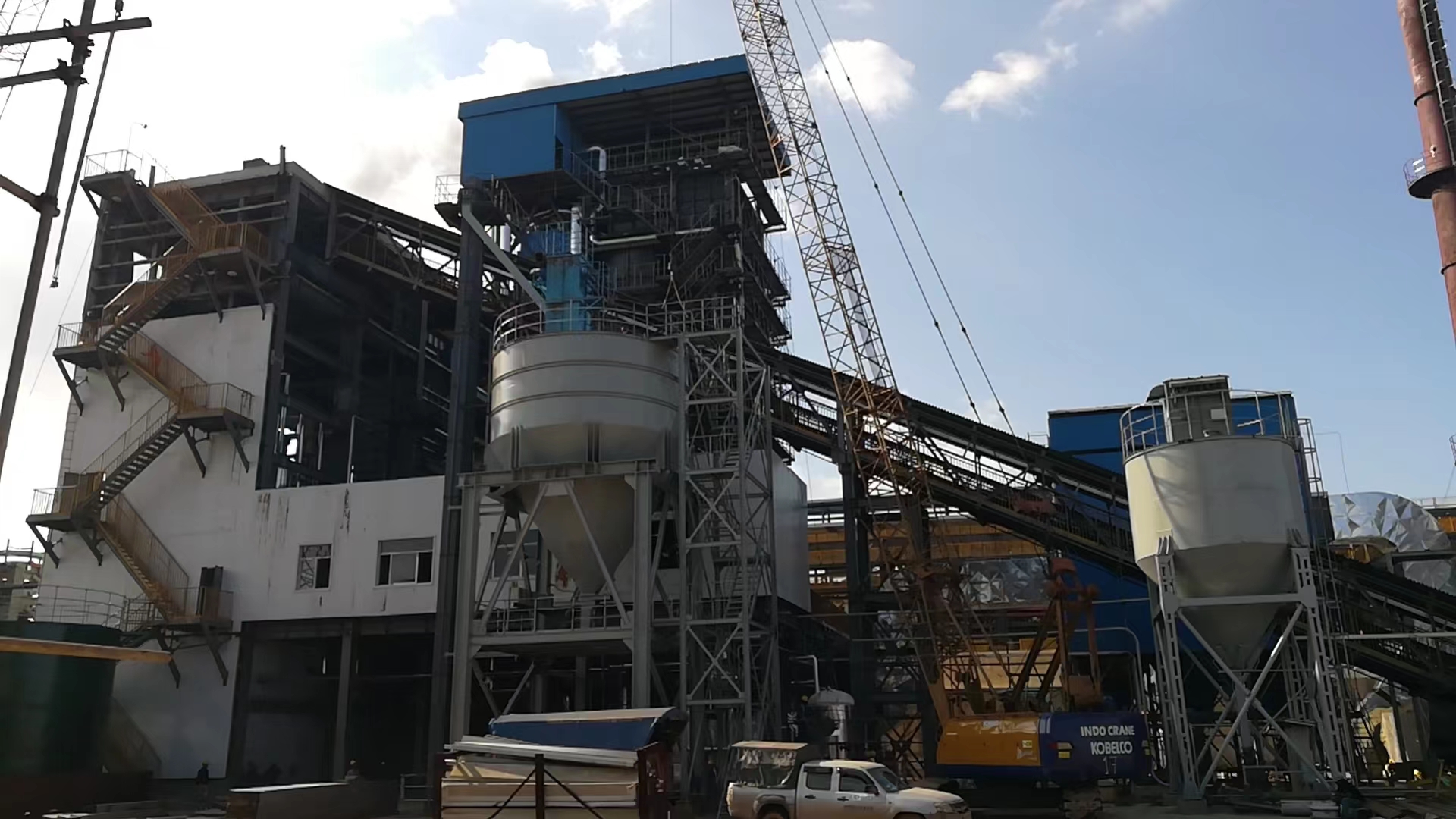
How Do SOx, NOx, and PM Standards Influence Boiler and Fuel Selection?
When planning a new boiler installation—or retrofitting an existing one—engineers must go beyond selecting for capacity and thermal efficiency. Today’s SOx, NOx, and particulate matter (PM) emission standards play a defining role in boiler and fuel selection. These pollutants are tightly regulated due to their links to acid rain, smog, respiratory illness, and climate impact. With increasingly strict emission limits worldwide, power and industrial plant operators must now choose boiler technologies and fuels not only for performance but also for regulatory compliance and environmental footprint.
SOx, NOx, and PM emission standards directly influence boiler and fuel selection by restricting the use of high-sulfur and high-ash fuels, requiring low-NOx combustion systems, and favoring advanced boiler designs such as CFB, FBC, and condensing systems. Fuels like natural gas and biomass are preferred where ultra-low limits apply, while solid fuels like coal may require expensive emission control systems to comply. The tighter the standards, the more selective and technically sophisticated the boiler and fuel choices must be.
Designing without emissions in mind is no longer viable—it leads to retrofits, penalties, or outright permit denial.
SOx, NOx, and PM emission standards significantly influence the choice of boiler type and fuel.True
Strict environmental regulations require low-emission combustion technologies and restrict the use of high-sulfur or high-ash fuels.
🔍 Pollutant-Specific Regulatory Pressure and Impact on Design
| Pollutant | Typical Source in Boiler Operation | Technology/Fuel Impact |
|---|---|---|
| SOx | Sulfur in coal, oil, some biomass types | Requires FGD, limestone injection, or low-S fuels |
| NOx | High-temp combustion of N in fuel/air | Requires staged combustion, SNCR/SCR, or low-N fuels |
| PM | Fly ash, soot, unburned carbon | Requires bag filters, ESPs, and clean-burning fuels |
→ To meet tight standards, plants must align fuel properties, boiler combustion design, and emission controls.
📏 Global Emission Standards (Comparative Summary)
| Pollutant | EU IED (mg/Nm³) | India CPCB (mg/Nm³) | China GB13223 (mg/Nm³) | US EPA MACT (mg/Nm³) |
|---|---|---|---|---|
| SOx | 150–200 | 100–600 | 200–400 | 150–250 |
| NOx | 150–200 | 300–450 | 200–300 | 150–200 |
| PM | 10–20 | 30–50 | 20–30 | 25–30 |
Tighter limits (e.g., EU IED) require fuel switching or advanced combustion + filtration technologies.
🔧 Boiler Technologies and Their Emission Performance
| Boiler Type | SOx Emission Profile | NOx Emission Profile | PM Emission Profile | Notes |
|---|---|---|---|---|
| Pulverized Coal (PC) | High (needs FGD) | High (needs SCR) | High (needs ESP) | Low cost, high emission unless controlled |
| Circulating Fluidized Bed (CFB) | Medium (with in-bed lime) | Medium (can add SNCR) | Medium (needs bag filter) | Flexible with fuels, moderate emissions |
| Stoker Grate / Biomass | Low–Medium (varies by fuel) | Medium | High (needs bag filter) | Best for waste/biomass |
| Natural Gas (Condensing) | Negligible | Very low | Negligible | Preferred for tightest emission zones |
| Oil-Fired (HFO) | Very High (sulfur) | Medium–High | Medium–High | Generally avoided in tight-regulation zones |
Natural gas and treated biomass often qualify as best available fuels in emission-sensitive regions.
🌾 Fuel Selection Based on Emissions Compliance Needs
| Fuel Type | Sulfur Content | Nitrogen Content | Ash/PM Potential | Regulatory Risk Level |
|---|---|---|---|---|
| Bituminous Coal | High (1–2%) | Medium (1–1.5%) | High | ⚠️ High |
| Lignite | Very High (>2%) | High | Very High | ❌ Very High |
| Petroleum Coke | Very High | Medium | Medium–High | ❌ Very High |
| Natural Gas | None | Very Low | None | 🟢 Very Low |
| Biomass (wood chips) | Low–Medium | Low–Medium | Medium | 🟡 Moderate |
| RDF / Waste Fuel | Varies widely | Medium–High | High | 🟠 Needs tailored system |
Fuels with high sulfur and ash content often require expensive post-combustion cleanup systems.
📊 Real-World Scenario – 35 MWth Boiler Selection
| Criteria | Option A: Coal PC | Option B: CFB + Biomass | Option C: Natural Gas |
|---|---|---|---|
| SOx Compliance | Needs FGD | In-bed lime sufficient | No SOx produced |
| NOx Compliance | Needs SCR | SNCR optional | Ultra-low NOx burner |
| PM Compliance | Needs ESP | Needs bag filter | No PM |
| Fuel Cost | Low | Medium | High |
| Regulation Risk | High | Medium | Low |
| Long-Term Viability | Declining | Transitional | Preferred |
→ Option B offers a balanced, compliant pathway with fuel flexibility.
🛠 Design & Selection Guidelines Based on SOx, NOx, and PM Limits
| Condition | Recommended Boiler + Fuel Strategy |
|---|---|
| Ultra-low PM limit (<10 mg/Nm³) | Condensing gas boiler + no solid fuel |
| NOx <150 mg/Nm³ (EU standard) | SCR or advanced SNCR on CFB or gas system |
| SOx <200 mg/Nm³ with high-S fuel | Wet FGD or switch to biomass/gas |
| Permit constraints for PM + NOx | Biomass CFB with staged air + bag filter + SNCR |
The tighter the emission cap, the cleaner the fuel and the more sophisticated the boiler design must be.
In conclusion, SOx, NOx, and PM emission standards are among the most influential factors in boiler and fuel selection. They directly determine whether certain fuels (like coal or petcoke) can be used, which technologies (like SCR, FGD, or bag filters) must be installed, and whether the system can meet compliance long term. In today’s regulatory environment, every boiler project begins with an emissions conversation—and the smartest choices are those that integrate compliance, performance, and fuel flexibility from day one.
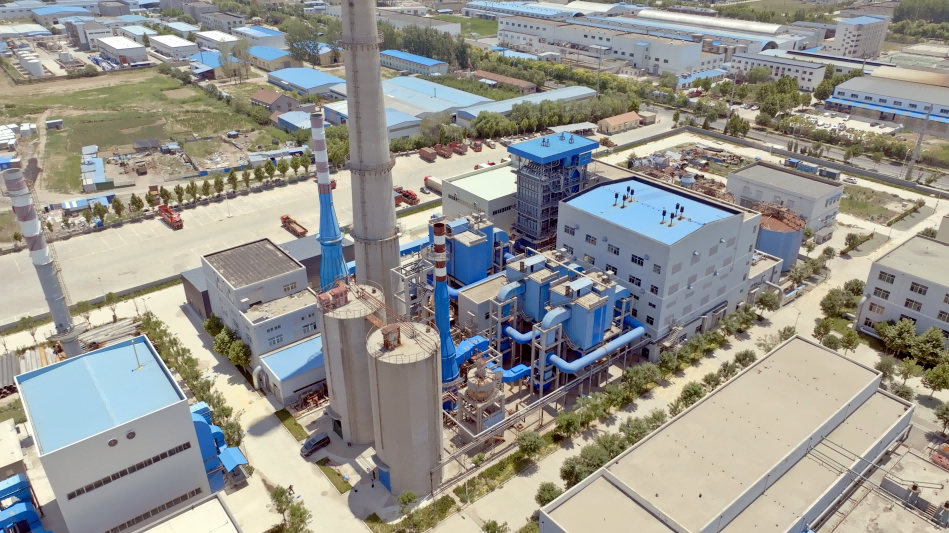
What Carbon Reduction Frameworks (e.g., ETS, Carbon Tax) Affect Boiler System Decisions?
In an era where decarbonization drives industrial transformation, carbon reduction frameworks such as carbon taxes, Emissions Trading Schemes (ETS), and ESG-linked policies have become decisive factors in how boiler systems are selected, designed, and financed. Today, companies are not just buying a boiler—they’re making a long-term climate and compliance commitment. These frameworks directly impact fuel choices, technology selection, lifecycle cost, permit approval, and access to climate-aligned financing. Ignoring them can result in regulatory risk, stranded assets, and missed sustainability targets.
Carbon reduction frameworks—including ETS, carbon taxes, net-zero mandates, and ESG disclosure standards—affect boiler system decisions by adding costs to fossil fuel combustion, rewarding low-carbon technologies, and requiring emissions tracking. These policies push industries to choose high-efficiency systems, switch to cleaner fuels like biomass or hydrogen, or integrate carbon capture readiness. Projects that align with these frameworks gain regulatory support, investment incentives, and long-term sustainability viability.
Compliance is no longer a technical challenge—it’s an economic and strategic imperative.
Carbon reduction policies such as ETS and carbon taxes influence boiler system selection and fuel choices.True
These frameworks increase the cost of carbon-intensive fuels and promote the use of cleaner technologies, reshaping boiler investment strategies.
🌍 Key Carbon Reduction Frameworks Affecting Boiler Projects
| Framework / Mechanism | Region / Sponsor | Main Impact on Boilers |
|---|---|---|
| Emissions Trading Scheme (ETS) | EU, China, Korea, UK | Requires CO₂ permits or allowances for emissions |
| Carbon Tax | Canada, Sweden, South Africa, Singapore | Adds cost per ton of CO₂ emitted |
| GHG Reporting Protocols | US (EPA GHGRP), India PAT | Requires boiler CO₂ data tracking and reporting |
| Science-Based Targets (SBTi) | Global companies (voluntary) | Demands emissions reduction pathway from fuel systems |
| Net-Zero Legislation | 70+ countries | Mandates phase-out of coal or high-carbon systems |
| Climate Finance (IFC, ADB, EIB) | Global development banks | Requires low-carbon boiler technologies for eligibility |
→ These frameworks drive investments toward clean combustion and future-proof boiler infrastructure.
💸 Economic Impact of ETS and Carbon Taxes
| Framework | Carbon Price (USD/ton CO₂) | Affected Boiler Fuel Types | Project Impact |
|---|---|---|---|
| EU ETS | ~$90/ton (2025 average) | Coal, oil, natural gas | Makes biomass/hydrogen more attractive |
| Canada Federal Carbon Tax | $65/ton (2024), rising to $170 by 2030 | Gas, coal | High gas cost = strong switch to electric or biomass |
| China ETS (power sector only) | ~$10/ton (pilot stage) | Coal-heavy plants | Expanding to industrial boilers |
| South Africa Carbon Tax | ~$9/ton, tiered system | All fossil fuels | Progressive rates for larger emitters |
Carbon cost can represent up to 30% of operating cost for coal-fired boilers in regulated regions.
🔧 Boiler System Decisions Driven by Carbon Frameworks
| Decision Area | Influence of Carbon Reduction Policy |
|---|---|
| Fuel Type Selection | Gas, biomass, RDF, or hydrogen preferred over coal/petcoke |
| Boiler Type | High-efficiency condensing or fluidized bed systems favored |
| Carbon Capture Readiness | Required in new coal/gas projects in many countries |
| Monitoring Requirements | CEMS + CO₂ monitoring for ETS/carbon tax compliance |
| Permit Approval | Depends on decarbonization alignment (esp. for coal-based) |
| Climate Financing Access | Only available for low-carbon boiler configurations |
Carbon policy is no longer downstream—it begins at design and budgeting stage.
📊 Example – 25 MWth Boiler Project Feasibility Comparison (EU, 2025)
| Configuration | Fuel Type | CO₂ Emissions (tons/year) | Carbon Cost (@$90/t) | Likely Compliance Status |
|---|---|---|---|---|
| Pulverized Coal Boiler | Bituminous Coal | ~60,000 | $5.4 million | ❌ Fails ETS + ESG screens |
| CFB with Biomass Co-firing | 60% Biomass | ~25,000 (40% CO₂ reportable) | $2.25 million | 🟡 Transitional compliance |
| Gas-Fired Condensing Boiler | Natural Gas | ~15,000 | $1.35 million | ✅ Preferred configuration |
| Biomass-Fired Grate Boiler | Forest Chips | ~5,000 (biogenic) | $0 (exempt) | ✅ Climate-aligned, finance eligible |
→ Selecting low-CO₂ fuels leads to lower carbon cost and easier regulatory approval.
🧪 Real-World Project Impact: Cement Plant (India)
Boiler: 30 TPH coal-fired steam generator
Issue: Non-compliance under India PAT Scheme + Carbon cost increasing
Actions:
Shifted to 50% biomass co-firing
Installed CEMS and energy monitoring
Applied for carbon finance under Verified Carbon Standard (VCS)
Results:
CO₂ emissions reduced by 18,000 tons/year
Avoided PAT penalty of ₹9 million
Certified as climate-resilient asset for ESG disclosure
🛠 Carbon-Responsive Design Features for New Boiler Projects
| Design Element | Benefit in Carbon-Regulated Markets |
|---|---|
| Biomass/RDF Fuel Flexibility | Enables rapid CO₂ intensity reduction |
| High-Efficiency (>90%) Boiler | Lowers fuel use and emissions per ton steam |
| Flue Gas Heat Recovery (Condensing) | Boosts energy output, reduces CO₂ |
| CEMS + CO₂ Monitoring System | Required for reporting in ETS and carbon tax |
| CCS-Ready Infrastructure | Prepares for future CO₂ capture mandates |
Projects that meet these criteria can access green finance, carbon credits, or tax exemptions.
In conclusion, carbon reduction frameworks such as ETS, carbon taxes, and net-zero mandates significantly affect boiler system decisions. These policies reshape how industries evaluate fuel, technology, efficiency, and cost. Modern boiler planning must align with carbon constraints from day one—not just for compliance, but to unlock financial, environmental, and competitive advantages. In the carbon-regulated world, the best boiler is not just efficient—it’s climate-smart.
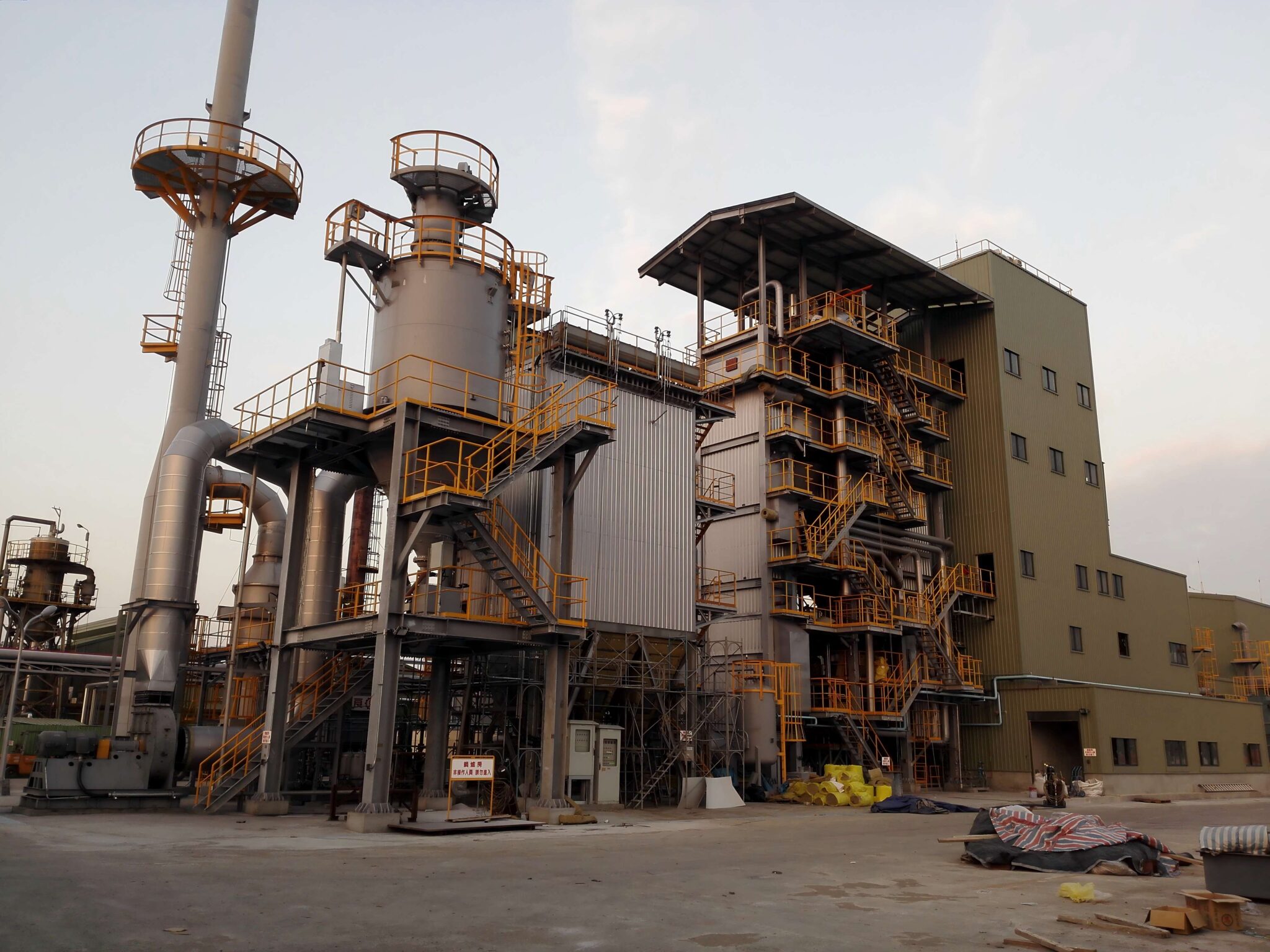
What Emission Control Technologies Are Required for Compliance (e.g., SCR, FGD, ESP)?
Modern industrial and utility boilers face strict emission regulations for a wide range of air pollutants—especially sulfur oxides (SOₓ), nitrogen oxides (NOₓ), and particulate matter (PM). These pollutants contribute to acid rain, smog, respiratory illnesses, and climate change. To comply with national and regional air quality laws such as the EU IED, US EPA MACT, India CPCB norms, or China’s GB13223, facilities must implement advanced emission control technologies tailored to their fuel type, boiler configuration, and emission limits. These systems are not optional—they are mandatory compliance enablers.
The emission control technologies required for compliance in power plant and industrial boilers include Selective Catalytic Reduction (SCR) or Selective Non-Catalytic Reduction (SNCR) for NOₓ, Flue Gas Desulfurization (FGD) systems for SOₓ, and Electrostatic Precipitators (ESP) or fabric filters (baghouses) for PM. Other controls like Activated Carbon Injection (ACI) and Dry Sorbent Injection (DSI) are used for mercury (Hg), HCl, and VOCs. The choice and combination of technologies depend on fuel type, boiler size, and specific regulatory limits.
These systems ensure that emission levels stay within legal thresholds and support sustainable boiler operations.
Emission control technologies such as SCR, FGD, and ESP are required to comply with boiler air quality regulations.True
These technologies are essential for reducing NOx, SOx, and PM emissions to meet legal environmental limits in industrial and power plant operations.
🔧 Overview of Required Emission Control Technologies
| Pollutant | Primary Control Technology | Removal Efficiency (%) | Notes |
|---|---|---|---|
| NOₓ | SCR (Selective Catalytic Reduction) | 85–95% | Requires catalyst, ammonia or urea |
| SNCR (Selective Non-Catalytic Reduction) | 40–70% | Simpler but less efficient | |
| SOₓ | FGD (Wet or Dry Flue Gas Desulfurization) | 90–98% | Limestone/lime based |
| DSI (Dry Sorbent Injection) | 70–90% | Used for lower SO₂ loads | |
| PM | ESP (Electrostatic Precipitator) | 98–99.5% | Low-pressure drop, high throughput |
| Baghouse (Fabric Filter) | >99.9% | Effective for fine particulates | |
| Hg | ACI (Activated Carbon Injection) | 80–95% | Used with baghouse or ESP |
| HCl, HF | DSI or Wet Scrubber | 70–95% | Controls acid gases |
→ Combinations of these systems are often required to meet all regulatory criteria simultaneously.
🧪 Real-World Compliance Example – 50 TPH Coal-Fired Boiler
| Pollutant | Measured Pre-Control (mg/Nm³) | Post-Control Target | Control Technology Used |
|---|---|---|---|
| SO₂ | 650 | <150 | Wet FGD + in-bed limestone |
| NOₓ | 420 | <180 | SNCR with urea |
| PM | 120 | <20 | Baghouse filter |
| Hg | 0.06 | <0.01 | ACI system |
Outcome:
Achieved CPCB 2017 norms and EU IED compliance
Eligible for ISO 14001 certification and ESG reporting
Energy savings via optimized reagent dosing and O₂ trim
📏 Technology Selection Based on Emission Standards
| Regulation | SOx Limit (mg/Nm³) | NOx Limit (mg/Nm³) | PM Limit (mg/Nm³) | Required Technologies |
|---|---|---|---|---|
| EU IED (New Units) | ≤150 | ≤150 | ≤10 | Wet FGD + SCR + Bag Filter |
| US EPA MACT | ≤250 | ≤200 | ≤30 | Dry FGD + SNCR/SCR + ESP |
| India CPCB (2017) | ≤200–600 | ≤450 | ≤30–50 | In-bed lime + SNCR + Bag Filter |
| China GB13223 | ≤200–400 | ≤300 | ≤30 | DSI + SNCR + ESP or Baghouse |
Tighter regulations require multiple layered systems for full-spectrum pollutant control.
🛠 Integration of Emission Controls in Boiler Design
| Boiler Type | Commonly Paired Control Technologies |
|---|---|
| Pulverized Coal (PC) | Wet FGD + SCR + ESP |
| CFB Boiler | In-bed limestone + SNCR + Bag Filter |
| Biomass Stoker | DSI + ACI + Bag Filter |
| Gas-Fired Condensing | Ultra-low-NOx burner + CO monitor (no FGD or PM control needed) |
Proper control integration is key to maintaining efficiency, uptime, and compliance.
📊 Operational Considerations and O&M Impacts
| Technology | Maintenance Needs | Operational Challenges |
|---|---|---|
| SCR | Catalyst fouling, urea/ammonia handling | Requires temp control and clean gas stream |
| FGD (Wet) | Sludge disposal, gypsum scaling | High water use and corrosion risk |
| ESP | Rapping system upkeep | Sensitive to fly ash resistivity |
| Baghouse | Filter bag replacement | High-pressure drop, risk of plugging |
| ACI | Sorbent handling system | Fine powder control and bag life impact |
→ Total cost of ownership must factor in both capital and O&M costs.
🌍 Compliance Benefits of Proper Emission Controls
| Benefit | Result |
|---|---|
| Legal Operation | Meets national and regional regulations |
| Avoids Penalties | Prevents fines, shutdown orders |
| Public Acceptance | Reduces visible pollution and odor |
| ESG and Sustainability Credits | Supports green financing, CDP disclosure |
| Permit Renewal Ease | Simplifies environmental audits |
Emission control is not just about the environment—it’s about economic continuity and reputational trust.
In conclusion, emission control technologies like SCR, FGD, and ESP are essential for achieving regulatory compliance in industrial and power plant boilers. Each pollutant has specific control solutions that must be tailored to boiler type, fuel properties, and emission limits. Failure to integrate these systems risks non-compliance, financial penalties, and operational disruption. With regulatory standards only tightening, the time to engineer compliance into every boiler project—is now.
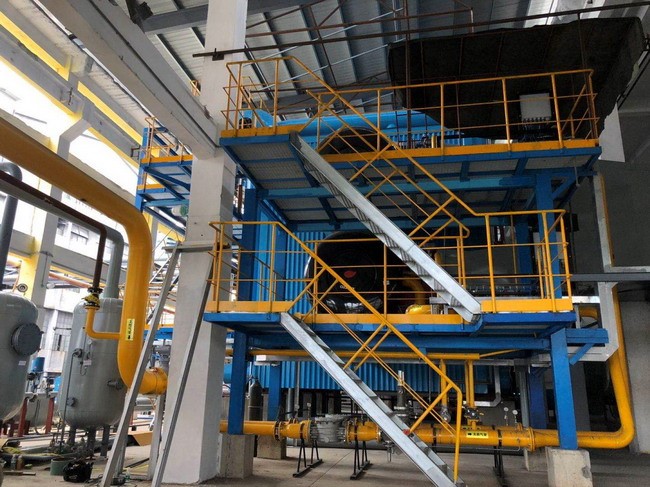
How Does Continuous Emissions Monitoring (CEMS) Ensure Regulatory Adherence?
As emissions regulations grow stricter worldwide, regulators no longer accept periodic stack testing or manual logbooks as sufficient proof of environmental compliance. Instead, facilities must provide continuous, accurate, and tamper-proof data on pollutant emissions. This is exactly what Continuous Emissions Monitoring Systems (CEMS) are designed to deliver. By continuously measuring emissions like SO₂, NOₓ, PM, CO, O₂, and CO₂, CEMS empowers plant operators to stay compliant, optimize combustion, and prove legal adherence in real time.
CEMS ensures regulatory adherence by providing continuous, real-time monitoring and recording of critical air pollutants emitted by boiler systems. It meets legal requirements in jurisdictions such as the EU, US, China, and India by verifying that emissions stay within prescribed limits, automatically logging data for auditing, and sending alerts when values approach thresholds. This not only fulfills permit obligations but also prevents environmental violations and supports transparent reporting.
In short, if it’s not monitored, it’s not compliant—and CEMS makes real-time compliance measurable and provable.
CEMS ensures compliance by continuously measuring and reporting boiler emissions in real time.True
CEMS allows plants to track pollutants like NOx, SO2, and PM continuously, providing legal proof of adherence to emissions limits.
🔍 What Is CEMS and What Does It Measure?
| Parameter | Function in Compliance Context |
|---|---|
| SO₂ / NOₓ / PM | Primary pollutants subject to emission limits |
| CO / CO₂ | Indicators of combustion quality and GHG tracking |
| O₂ | Required for correcting emissions to reference O₂ |
| Flue Gas Temp & Flow | Supports emissions normalization calculations |
| Opacities (in some regions) | Measures visible emissions (smoke) |
CEMS systems are mandated for medium- and large-scale boilers in nearly all regulated countries.
🧰 Core Components of a CEMS Setup
| Component | Role in Compliance |
|---|---|
| Gas Sampling Probe | Extracts representative gas from flue stream |
| Sample Conditioning System | Removes moisture, particulates before analysis |
| Gas Analyzers | Measures pollutants like SO₂, NOₓ, CO, CO₂, O₂ |
| Particulate Monitor | Detects dust/ash using triboelectric or optical methods |
| Data Acquisition System (DAS) | Records, stores, and timestamps emissions data |
| Online Reporting Interface | Transmits data to regulators via secure channel |
→ CEMS must comply with calibration standards like QAL1/QAL2 (EU) or 40 CFR Part 60/75 (US).
📏 Jurisdictions Requiring CEMS
| Country/Region | Regulation | CEMS Requirement |
|---|---|---|
| EU | IED + BREF LCP | Mandatory for >50 MWth boilers |
| USA | EPA MACT & NSPS | Required under 40 CFR Parts 60/75 |
| China | GB13271 + HJ212 | Real-time online CEMS for ≥10 TPH |
| India | CPCB 2015 / 2017 standards | CEMS required for ≥10 TPH |
| South Africa | Air Quality Act | Required for AEL-licensed plants |
| Mexico, Brazil, Indonesia | National guidelines evolving | Required in new utility plants |
Failure to install or operate CEMS can result in non-issuance of permits, fines, or facility shutdowns.
📊 Example – 40 TPH Biomass Boiler CEMS Output Summary
| Pollutant | Regulatory Limit (mg/Nm³) | CEMS Reading (Real-Time) | Status |
|---|---|---|---|
| SO₂ | 200 | 148 | ✅ Compliant |
| NOₓ | 300 | 228 | ✅ Compliant |
| PM | 30 | 22 | ✅ Compliant |
| CO | 150 | 132 | ✅ Compliant |
| O₂ (%) | Reference: 6% | 5.8 | ⚠ Near Limit |
→ Auto-alert triggered for nearing O₂ correction threshold, enabling preventive action.
🧪 Compliance Value of CEMS – Real-World Case Study (India)
Boiler: 30 TPH coal-fired
CEMS Provider: ENVEA India
Integration: GPRS + CPCB Web Portal
Key Outcomes:
Online submission of SO₂, NOₓ, PM every 15 minutes
Used as proof of compliance for Pollution Control Board audits
Helped optimize SNCR urea dosing based on NOₓ trends
Prevented ₹2.4 million in potential penalty fees
🔧 How CEMS Supports Regulatory Adherence
| Function | Compliance Benefit |
|---|---|
| 24/7 Real-Time Monitoring | Ensures no unnoticed violations |
| Data Logging & Archiving | Provides audit trail for inspections |
| Automated Alerts | Warns staff before breaches occur |
| Daily/Monthly Reporting | Satisfies reporting obligations (CPCB, EPA, etc.) |
| Integration with SCADA/DCS | Enables control actions based on emission trends |
Without CEMS, there’s no proof that the plant met emission limits continuously.
📈 Additional Benefits Beyond Compliance
| Area | Value Added via CEMS |
|---|---|
| Energy Efficiency | Tracks combustion quality via O₂ and CO trends |
| GHG Reporting | Tracks CO₂ output for ESG and climate programs |
| Predictive Maintenance | Identifies trends in burner or filter degradation |
| Investor Transparency | Demonstrates sustainable operations for ESG scoring |
→ CEMS data increasingly supports green finance and sustainability certifications.
In conclusion, Continuous Emissions Monitoring Systems (CEMS) are indispensable for regulatory compliance in modern boiler operations. They deliver real-time visibility into pollutant levels, ensure legal reporting obligations are met, and prevent costly environmental violations. In today’s tightly regulated and climate-conscious environment, CEMS is more than a monitoring device—it is a compliance backbone, risk shield, and operational advantage.
🔍 Conclusion
In today’s energy landscape, environmental and emission regulations are non-negotiable drivers of power plant boiler selection. From fuel type to emissions control technology, every component must be chosen with compliance in mind. A regulation-ready boiler not only avoids legal risks but also ensures long-term sustainability, operational stability, and public trust. Integrating environmental compliance into the design phase is key to future-proofing your energy infrastructure.
📞 Contact Us
💡 Need help designing a boiler system that meets all environmental standards? Our experts specialize in compliant boiler solutions, emissions system integration, and regulatory consulting for industrial power plants.
🔹 Contact us today to build a clean, efficient, and regulation-compliant power plant boiler system! ⚡🌱✅
FAQ
What environmental regulations affect industrial power plant boiler selection?
Industrial power plant boilers are regulated by frameworks like the U.S. EPA Clean Air Act, EU Industrial Emissions Directive (IED), and local air quality rules. These regulations enforce limits on NOx, SO₂, CO₂, particulate matter (PM), and mercury emissions, directly impacting the boiler’s combustion system, fuel type, and pollution control technologies.
How do CO₂ and greenhouse gas (GHG) limits influence boiler selection?
GHG emissions regulations encourage the use of high-efficiency systems, low-carbon fuels, and carbon capture technologies. Boilers that use renewable fuels (e.g., biomass) or are capable of co-firing with natural gas or hydrogen are increasingly favored to meet carbon neutrality goals and avoid penalties.
Why is NOx control critical in power plant boilers?
Nitrogen oxides (NOx) contribute to smog and acid rain. Compliance often requires low-NOx burners, selective catalytic reduction (SCR), or selective non-catalytic reduction (SNCR) systems, especially in high-capacity boilers.
What technologies are used to control SO₂ emissions?
Sulfur dioxide (SO₂) is controlled using flue gas desulfurization (FGD) systems such as wet scrubbers or dry sorbent injection, particularly in coal and oil-fired boilers. Fuel switching to low-sulfur fuels is also a common compliance strategy.
How do particulate matter (PM) regulations affect boiler configuration?
PM emissions are tightly regulated due to their impact on human health. Boilers must include baghouse filters, electrostatic precipitators (ESPs), or cyclone separators to capture fine ash and dust, especially when burning solid fuels like coal or biomass.
References
EPA Clean Air Act Boiler Standards – https://www.epa.gov
EU Industrial Emissions Directive – https://www.europa.eu
Greenhouse Gas Reporting and Reduction – https://www.iea.org
NOx Control Technologies in Power Plants – https://www.sciencedirect.com
SO₂ Mitigation Strategies for Industrial Boilers – https://www.researchgate.net
Particulate Emission Standards and Controls – https://www.bioenergyconsult.com
Boiler Fuel Switching and Emission Impact – https://www.mdpi.com
SCR and SNCR Systems Explained – https://www.energysavingtrust.org.uk
Industrial Boiler Compliance Planning – https://www.automation.com
Carbon Capture Integration in Power Boilers – https://www.sciencedirect.com

